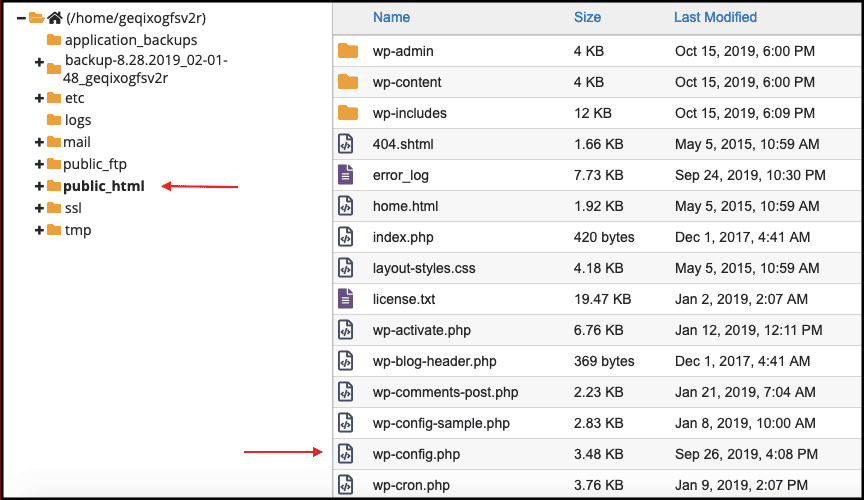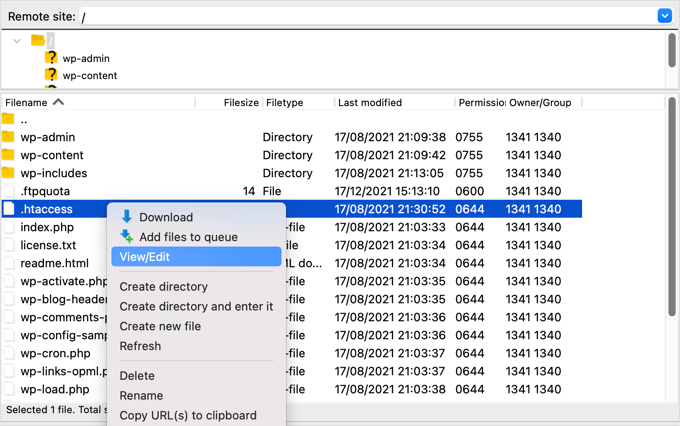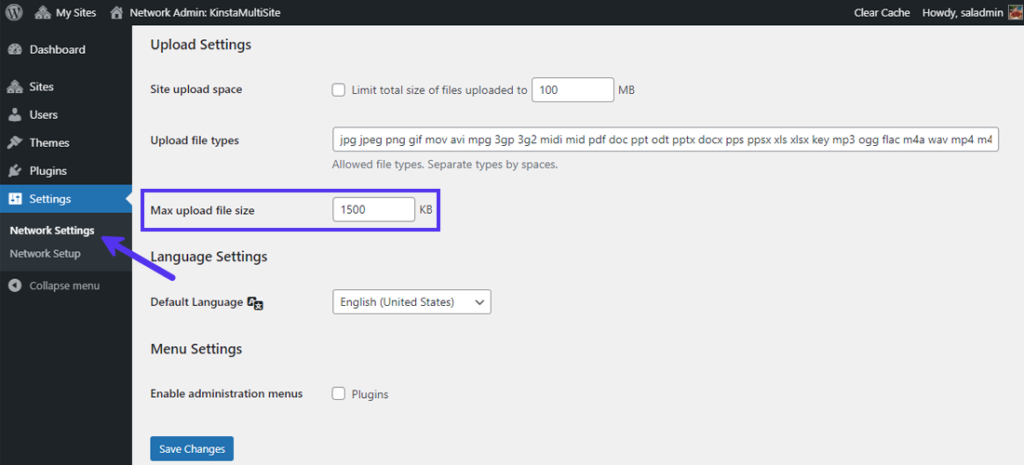
A Step-by-Step Manual: How to Amplify Your WordPress Upload Size
WordPress, a powerful platform that empowers millions of websites globally, provides a comprehensive solution for website development. However, despite its remarkable flexibility, there is a default file upload limit that can pose a challenge. This restriction becomes particularly problematic when you want to upload large files, such as high-quality images, audio files, or videos, to enrich your website’s media capabilities and offer a more immersive experience to your audience. By increasing the WordPress upload size limit, you can overcome this obstacle and unlock the full potential of your site, allowing you to share richer and more engaging content with your visitors seamlessly.
Understanding WordPress Upload Size
Firstly, it’s important to understand what we mean by ‘WordPress upload size’. When we refer to WordPress upload size, we are talking about the maximum file size you can upload through the WordPress admin area. WordPress typically sets a default limit ranging from around 2 to 8 MB. However, it’s worth noting that web hosting providers may also have their upload limits in addition to the WordPress limit.
Let’s delve into the two common methods for changing this limit: ‘wordpress increase upload size wp-config and ‘wordpress max upload size’. The former method involves editing the WordPress configuration file (wp-config.php), which allows you to modify the upload size limit according to your needs. On the other hand, the latter method involves changing the upload size limit directly within your WordPress settings.
By clearly understanding the WordPress upload size and the methods available to modify it, you can ensure that you have the flexibility to upload larger files and meet your specific requirements.
Preparatory Steps
Before making any changes to your WordPress site, it’s crucial to back up your data. By doing so, you ensure that in the event of any unforeseen issues, you can swiftly restore your site to its previous state, safeguarding against any potential data loss or disruption. There are a couple of ways you can back up your WordPress site – either manually or by utilizing a reliable plugin such as UpdraftPlus or BackupBuddy. These plugins offer user-friendly interfaces and comprehensive features, allowing you to easily schedule automated backups, store them securely, and restore your site effortlessly whenever needed. Implementing a robust backup strategy provides peace of mind and acts as a safety net, empowering you to make changes and updates to your WordPress site confidently.
Methods to Increase WordPress Upload Size
There are several reliable methods to increase the WordPress upload size. One way is by modifying the wp-config.php file, where you can adjust certain settings to allow larger file uploads. Another method involves modifying the .htaccess file, which controls various aspects of your WordPress site, including upload limits. Additionally, you can explore using a WordPress plugin specifically designed to expand the upload size capabilities. By implementing these techniques, you can easily optimize your WordPress experience and accommodate larger file uploads.
Method 1: How to Increase WordPress Upload Size via wp-config.php File
The wp-config.php file is a critical component of your WordPress site’s settings. It is a central hub where you can fine-tune various configurations, including your WordPress upload size. To modify this setting, access your site’s root folder via FTP (File Transfer Protocol) and locate the wp-config.php file.
Once you’ve found the file, open it using a text editor and add the following lines of code:
“`php
@ini_set( ‘upload_max_size’, ’64M’ );
@ini_set( ‘post_max_size’, ’64M’);
@ini_set( ‘max_execution_time’, ‘300’ );
“`
These lines of code allow you to adjust the upload limit for your WordPress site. The 64M numbers represent the new upload size limit, which you can modify according to your specific requirements.
By making these changes in the wp-config.php file, you can effectively enhance your WordPress site’s upload capabilities and accommodate larger files or media content. Remember to save the file after making the necessary modifications.
Please note that modifying the wp-config.php file requires a certain level of technical proficiency. If you’re not familiar with FTP or editing configuration files, it’s advisable to seek assistance from a professional or refer to WordPress documentation for detailed instructions.
Method 2: Increasing WordPress Upload Size via .htaccess File
One effective method to increase your WordPress upload size is by modifying the .htaccess file. This file, typically found in the root directory of your WordPress installation, allows you to configure various server settings. To adjust the upload size limit, open the .htaccess file and include the following lines of code:
“`
php_value upload_max_filesize 64M
php_value post_max_size 64M
php_value max_execution_time 300
php_value max_input_time 300
“`
These lines of code specify the maximum file size, post size, and execution and input times for PHP. Remember to customize the values based on your specific requirements and server configuration. By making these adjustments, you can ensure smoother and more efficient file uploads in WordPress.
Method 3: Using a WordPress Plugin to Increase Upload Size
If you’re uncomfortable editing your site’s files manually, you can increase your WordPress upload size effortlessly using a plugin. One such reliable option is the “Increase Maximum Upload File Size” plugin. Once installed, you can easily navigate to the plugin’s settings and specify your desired maximum upload size, ensuring a seamless uploading experience.
However, it’s important to remember that while using a plugin can be convenient, it may not always circumvent server-side restrictions imposed by your web host. So, checking with your hosting provider to ensure compatibility and avoid any potential limitations is worthwhile.
Conclusion
Increasing the upload size limit of your WordPress site can have a substantial impact on its functionality. By allowing larger file uploads, you can seamlessly incorporate high-quality images, videos, and other media into your content, providing a more engaging experience for your visitors.
However, it’s crucial to prioritize the safety of your website before implementing any changes. Make sure to thoroughly back up your site to safeguard your data and settings. This way, you can confidently explore different methods to increase the upload capacity, knowing your website is protected.
With an expanded upload limit, you’ll have the power to deliver even richer and more immersive content to your audience, elevating their browsing experience and setting your website apart from the competition. So, take the time to optimize your WordPress site and unlock its full potential!
Frequently Asked Questions
Q1: What is the purpose of the wp-config.php file in WordPress?
The wp-config.php file is a core file in your WordPress installation. It is the central place where you can fine-tune various configurations for your site, including the upload size limit.
Q2: How can I increase my WordPress upload size via the wp-config.php file?
You can increase your WordPress upload size by accessing your site’s root folder via FTP, locating the wp-config.php file, and adding certain lines of code that set new upload size limits. Remember, any changes you make should be within your server’s capacity.
Q3: What is the .htaccess file in WordPress?
The .htaccess file is a configuration file used by the Apache web server. In the context of WordPress, it allows you to adjust various server settings, including the upload size limit.
Q4: Can I increase the WordPress upload size limit without editing files?
If you’re uncomfortable editing your site’s files manually, you can use a WordPress plugin, such as “Increase Maximum Upload File Size”. It lets you specify your maximum upload size through the plugin’s settings.
Q5: Is there any risk in increasing the WordPress upload size limit?
While increasing the WordPress upload size limit can enhance your site’s functionality, it’s important to note that larger file uploads can consume more server resources. Therefore, ensure your hosting provider’s server can handle the increased load. Always perform a thorough backup of your site before making any changes.




